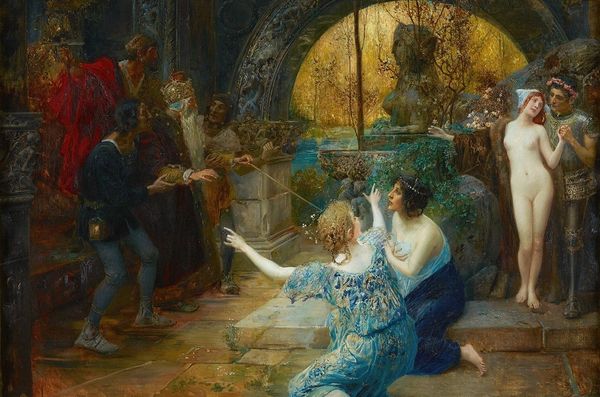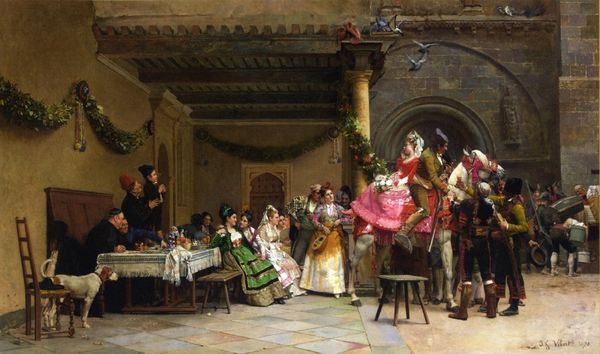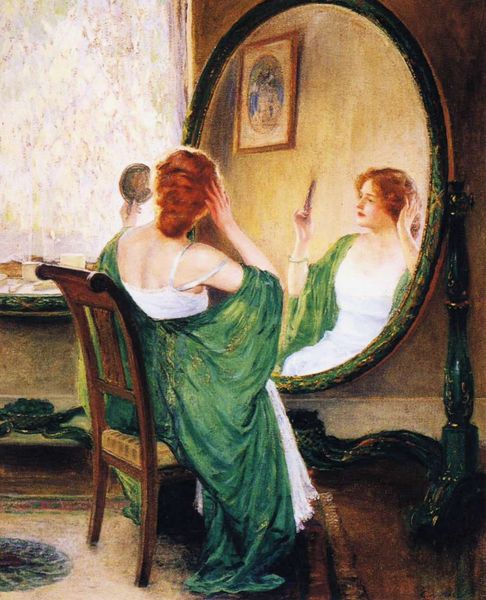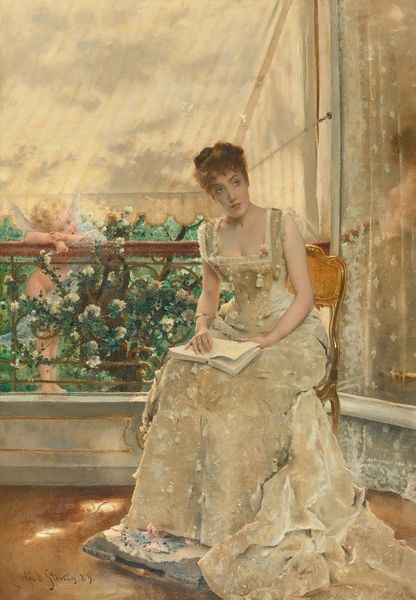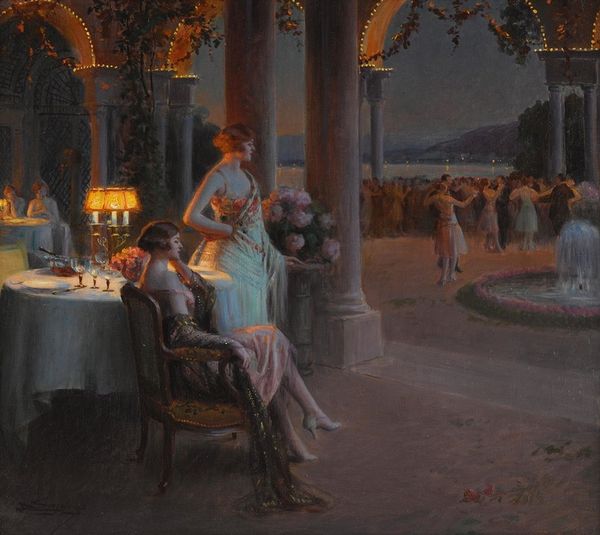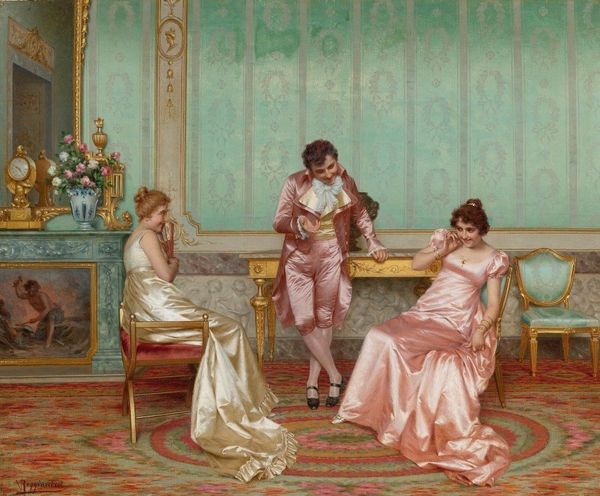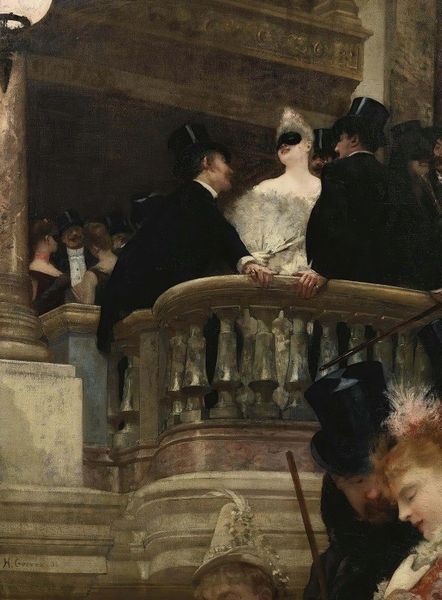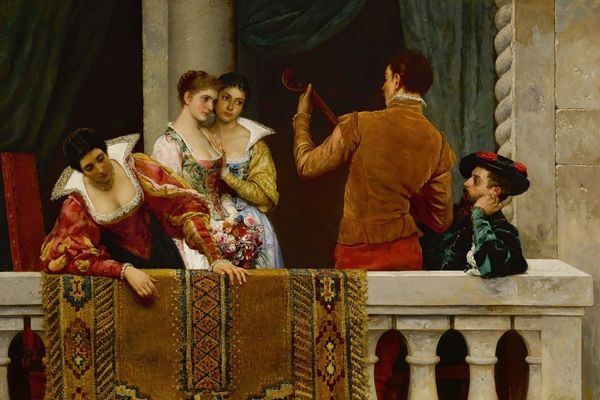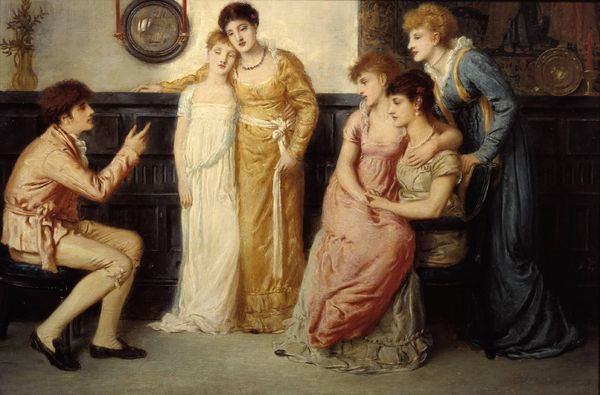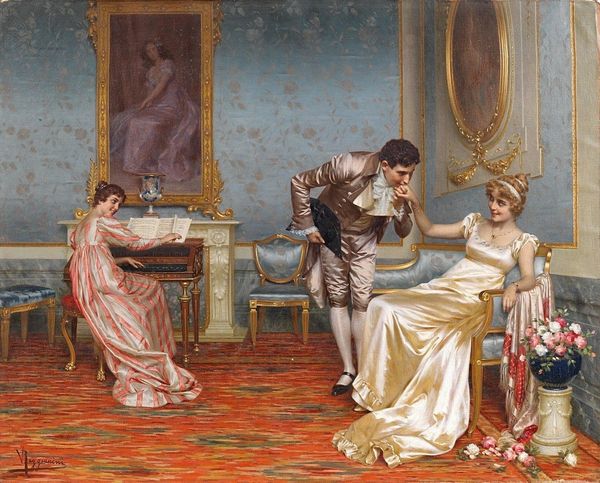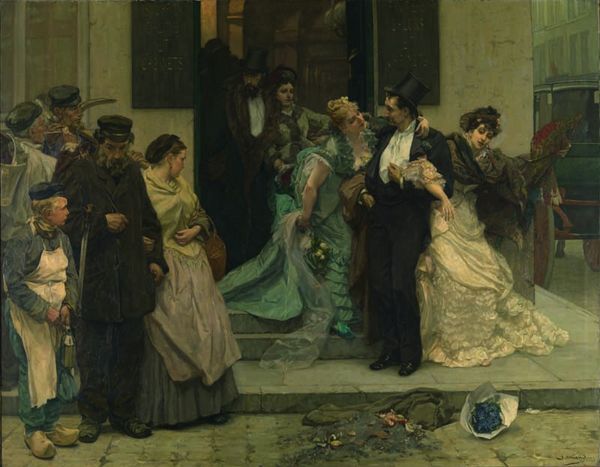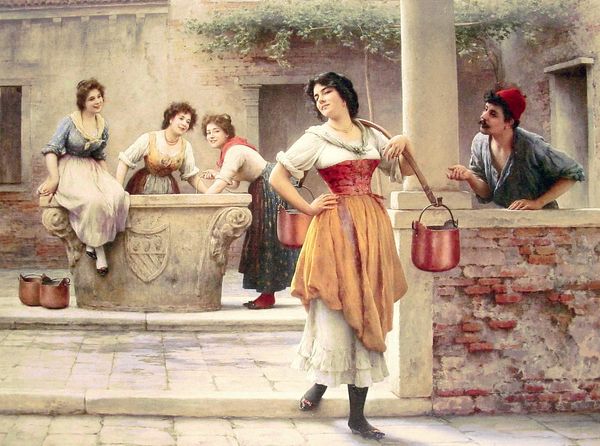
painting, impasto
#
portrait
#
figurative
#
painting
#
impasto
#
folk-art
#
cityscape
#
genre-painting
#
realism
Copyright: Modern Artists: Artvee
Curator: Welcome. Today, we're considering Tom Lovell's painting, titled "At the Casino." It's a glimpse into a bygone era, rich with character and texture. Editor: Texture indeed! The impasto is pretty prominent, giving it that real sense of weight and almost theatrical richness. It feels...retro glam, with a touch of unease. Curator: Yes, that texture. I'm thinking specifically about the almost sculptural way he's built up the paint in the folds of the gown and how the lighting catches it. It feels almost palpable. It feels so romantic, the light, the implicit tension. What materials do you imagine him using? Editor: Gotta be oils, right? To get that density, that workable, slow-drying time. You can see how he's manipulated the surface, probably with palette knives as well as brushes, blurring that line between painting and... I dunno, bas-relief sculpture, perhaps? And notice the subjects: formalwear in a casino evokes the socio-economic spheres interacting with the backdrop that is Southwestern folk-art style! It speaks to themes of commerce and labor embedded within each other. Curator: And yet, it goes further. Look how Lovell contrasts the soft focus on the woman’s lavender gown with the sharper lines of the figures deeper in the painting—like we are privy to an unspoken truth about status or intention in the room. And I can imagine the layers he paints with. Every painter hopes for a sense of clarity—like water rippling off river stone. This clarity shows how aware he is of what to apply to the scene. What does his composition reveal? Editor: Right—the foreground’s almost stage-managed, compared to the bustling crowd towards the back. The framing—the archway, the doorway. Almost like a peepshow. This is more than just social realism. And those decorative elements? Are they functional? Or trophies? Lovell, who's known for depictions of the Old West and historical subjects, creates a kind of pastiche of Western aesthetics, subtly underlining commodity production through the entire history. Curator: True—and there's something about the quiet watchfulness of that figure under the arch that suggests he is an observer within this cultural theater too, and is more than just part of the scenic decoration! Editor: Makes you think, who benefits, who labors, and who merely observes the cultural commodification. Curator: So perhaps it reveals more than a period genre painting. More than we thought possible. Editor: Yes! Next time you visit, be sure to look more closely!
Comments
No comments
Be the first to comment and join the conversation on the ultimate creative platform.
